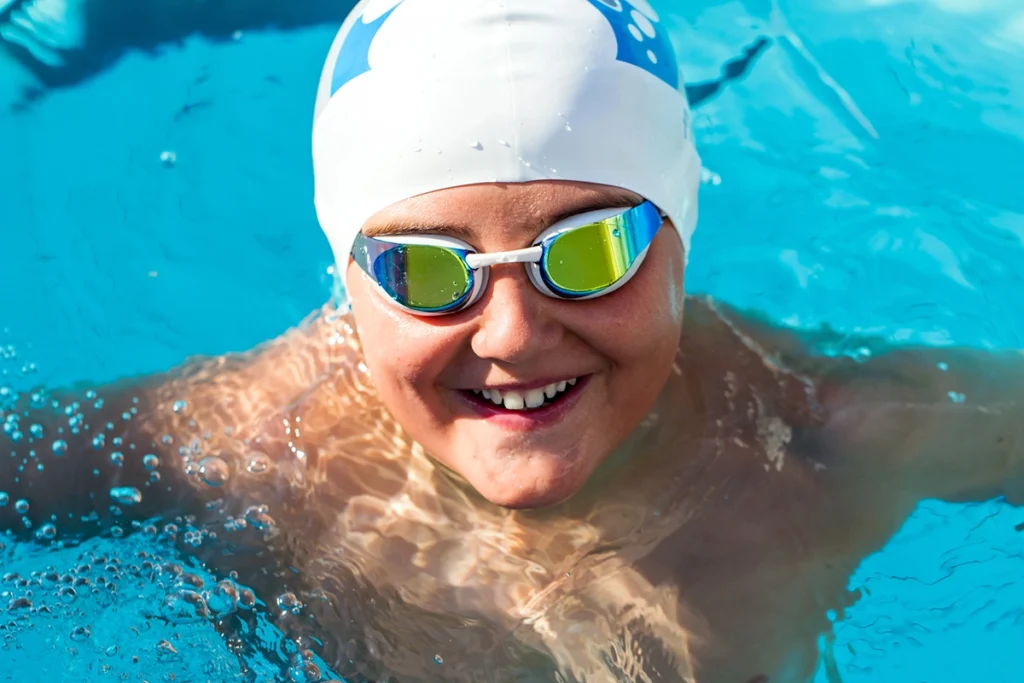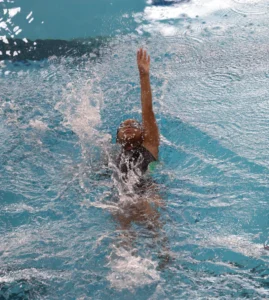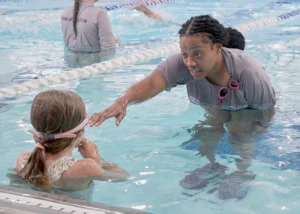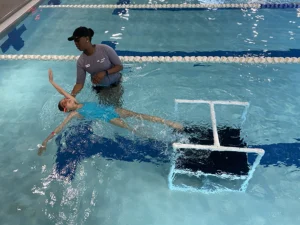Essential Conversations to Have With Your Teen About Water Safety

Remember when keeping your toddler from wandering toward the pool was your biggest worry? These days, your teenager wants to drive to the lake with friends, have pool parties, and hop on their friend’s dad’s boat— and suddenly those baby pool gates feel pretty quaint.
You’ve spent years teaching them to swim, drilling safety rules, and watching every move they make. They may be strong swimmers and responsible kids who know better.
So why does letting them go still feel so terrifying?
Water safety for teens is completely different from anything you’ve dealt with before. Following our water safety advice since they were little, you know, each age brings new challenges. But teenagers? They’re in their own league entirely.
Here’s what catches most parents off guard: drowning risk actually climbs again during the teen years— and for boys, it’s even worse— 80% of drowning victims are male, even for kids who’ve been swimming since they could walk. The problem isn’t their swimming ability— it’s everything else that comes with it.
The Teen Water Safety Reality Check
Let’s discuss what’s actually happening with teenagers and water. Your kid can swim laps around you, knows all the pool rules by heart, and has never given you a moment’s worry in the water. But put them with three friends at a quarry, and suddenly their brain turns to complete mush.
That’s not an exaggeration— according to science, the teen’s brain is still under construction, especially when it comes to decisions that should trigger, ‘hey, maybe this isn’t such a great idea.’ They may be able to execute the perfect dive— but they might not think twice about doing it into water they know nothing about!
Hot Tip: Teen drowning mostly happens in bodies of water like lakes, rivers, and oceans— not in the pool where they learned to swim. These environments are a whole new ballgame and require new ongoing conversations.
Hidden Danger: Overconfidence kills (literally). Teens who’ve been swimming confidently for years might be tempted to participate in dangerous activities they’re not prepared for. (And they don’t know they’re not prepared for it!)
Essential Conversations About Water Safety for Teens
The ‘Invincible Talk’
This conversation really sucks, but you have to have it anyway. Your teenager thinks they’re bulletproof— it’s hardwired into their developing brain. Sit them down and acknowledge that yes, they’re excellent swimmers. But explain that drowning risk actually increases during teen years, and it has nothing to do with swimming ability whatsoever.
Use real examples. Show them news stories about strong swimmers who got into trouble. Make it crystal clear that even Olympic athletes respect the power of water and follow safety protocols religiously.
The Buddy System 2.0
Remember teaching them about the buddy system when they were six? Time for the advanced version now. It’s not just about swimming alone or finding someone to stick with you. The new conversation is about choosing friends who won’t pressure them into making stupid decisions and advocating for themselves when a situation seems dangerous.
Substance Abuse and Water
This is a conversation no parent wants to have, but the statistics don’t lie: Alcohol is associated with 70% of water recreation deaths like boating and swimming. So be straight with them: Alcohol and drugs screws with their swimming ability, balance, judgment, and body temperature regulation. Even being around others who are drinking brings unnecessary risk to the entire group.
Advanced Water Safety for Teens
Your teen needs to know that emergency situations don’t wait for an adult to show up. They need to know the signs of drowning, basic rescue techniques, and when and whom to call for help.
Your teen needs a crash course in:
- Rip currents and how to escape them (swim parallel to shore)
- Cold water shock and hypothermia risks
- Underwater hazards in murky water
- Current strength in rivers and streams
Hidden Danger: Even strong swimmers can get into serious trouble in water that’s just a few degrees colder than they’re used to. Cold water can cause muscle cramping and complete disorientation.
Hot Tip: Teach your teen to research the beach or river they are going to first. Discover the temperatures, water conditions, and look into what others say about their destination. Learn the beach flags so they know if conditions are optimal for swimming.
Emergency Planning
Work with your teen to think through different emergency scenarios before they happen. What do they do if someone gets into trouble? How do they get help quickly when they’re in the middle of nowhere? Who do they call and when? How do they give emergency responders good location information?
The “Feet First, First Time” Rule
This becomes absolutely make-or-break important for teens who think they know every swimming hole in a 50-mile radius. Every single entry into unknown water should be feet first. Period. No exceptions for showing off, no “but I’ve been here before,” no “it looks totally fine.”
Diving injuries have little to do with how good of a swimmer you are and can cause permanent spinal damage in an instant.
Understanding Lifeguard Limitations
While a lifeguard’s presence does reduce the risk of drowning, they are not superheroes. They’re human, they have blind spots, and they won’t always be able to see everything. Personal responsibility is still crucial.
Group Dynamics and Water Safety for Teens
When Friends Make Bad Decisions
Your responsible teenager might make terrible choices when their friend suggests jumping off that bridge “just this once.” You need to give them scripts for these moments before they happen.
Role-play different scenarios. Help them practice responses like:
- “I’m good here.”
- “Let’s check how deep it is first.”
- “Maybe we should ask the lifeguard.”
Hidden Danger: “Instagram-worthy” locations are often dangerous. That perfect cliff diving shot might come with serious injury risks.
Hot Tip: Emergency response skills become crucial for teens. Consider CPR certification as a 16th birthday gift. Many teens find lifeguard training empowering, and it reinforces water safety knowledge.
Specific Risks by Activity
Beach and Ocean Safety
- Understand beach warning flags and posted conditions
- Learn to identify and escape rip currents
- Never turn your back on waves
- Understand the dangers of diving into waves
Lake and River Swimming
- Research swimming areas and known hazards beforehand
- Understand that natural water temperatures vary dramatically
- Be aware of boat traffic and designated swimming areas
- Know that river currents can be deceptively strong
Pool Party Safety
- Know the pool depth before jumping or diving
- Understand that alcohol and swimming are a deadly combination
- Designate a sober supervisor for the group
- Keep pool areas clear of glass and breakable items
Enlist WeAquatics in Your Teen’s Water Safety Journey
Ready to boost your teen’s water safety skills? Contact WeAquatics today to learn about our swimming programs designed for teens and adults. From one-on-one Learn-to-Swim lessons to competitive opportunities through Young Masters, we help families build the water confidence and competence that creates lifelong safety.




